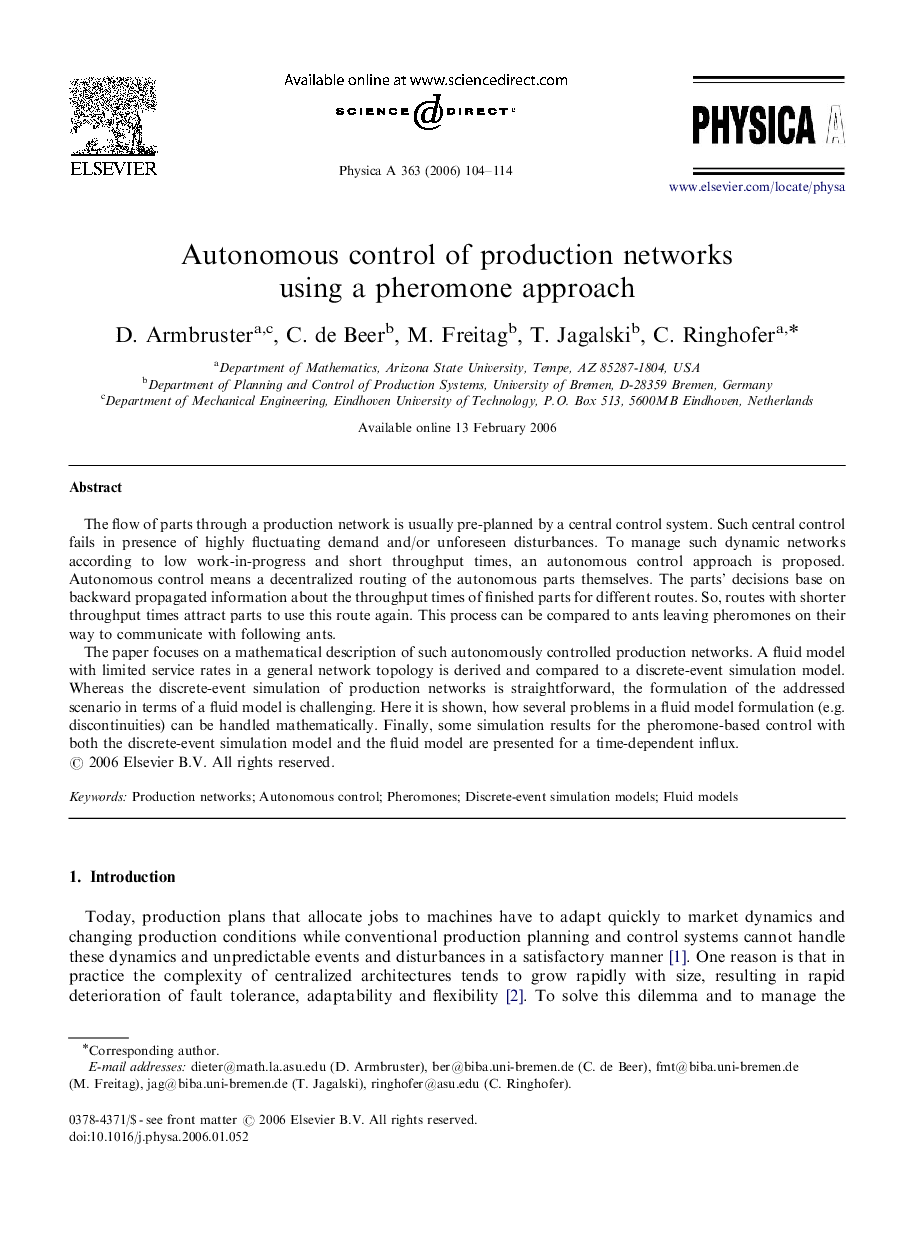| Article ID | Journal | Published Year | Pages | File Type |
|---|---|---|---|---|
| 979296 | Physica A: Statistical Mechanics and its Applications | 2006 | 11 Pages |
The flow of parts through a production network is usually pre-planned by a central control system. Such central control fails in presence of highly fluctuating demand and/or unforeseen disturbances. To manage such dynamic networks according to low work-in-progress and short throughput times, an autonomous control approach is proposed. Autonomous control means a decentralized routing of the autonomous parts themselves. The parts’ decisions base on backward propagated information about the throughput times of finished parts for different routes. So, routes with shorter throughput times attract parts to use this route again. This process can be compared to ants leaving pheromones on their way to communicate with following ants.The paper focuses on a mathematical description of such autonomously controlled production networks. A fluid model with limited service rates in a general network topology is derived and compared to a discrete-event simulation model. Whereas the discrete-event simulation of production networks is straightforward, the formulation of the addressed scenario in terms of a fluid model is challenging. Here it is shown, how several problems in a fluid model formulation (e.g. discontinuities) can be handled mathematically. Finally, some simulation results for the pheromone-based control with both the discrete-event simulation model and the fluid model are presented for a time-dependent influx.
